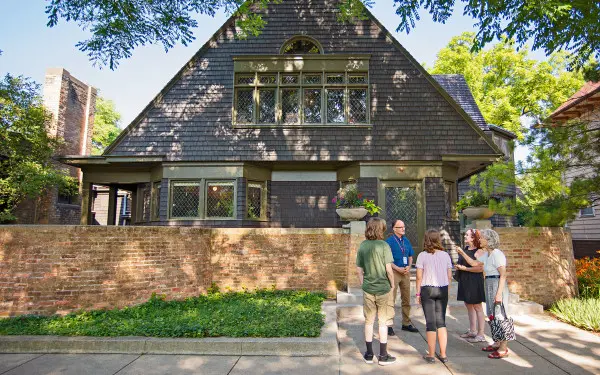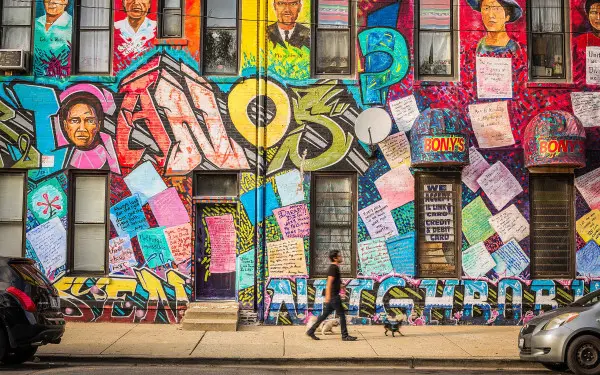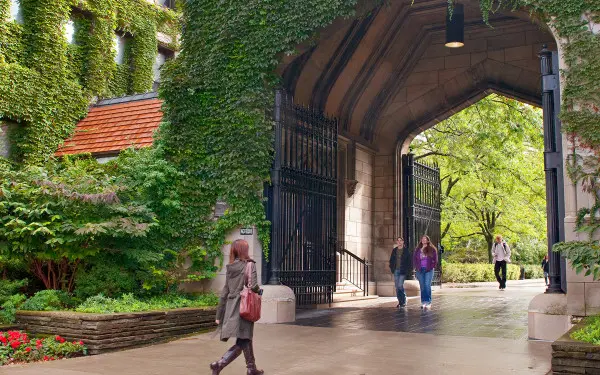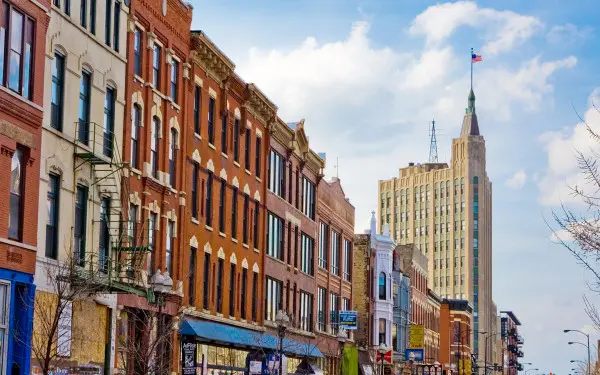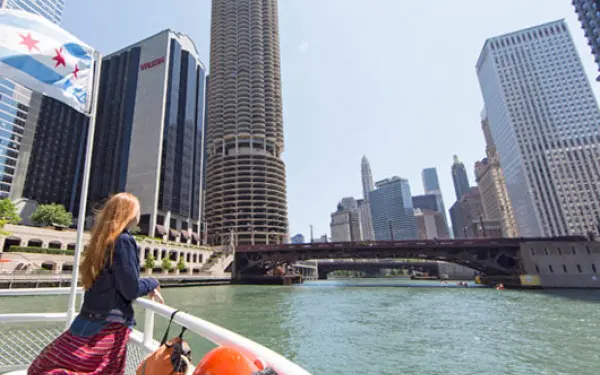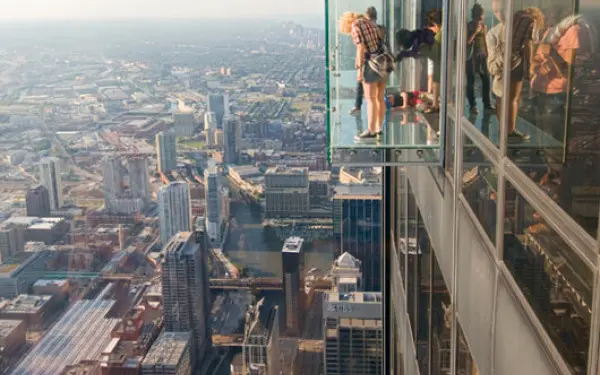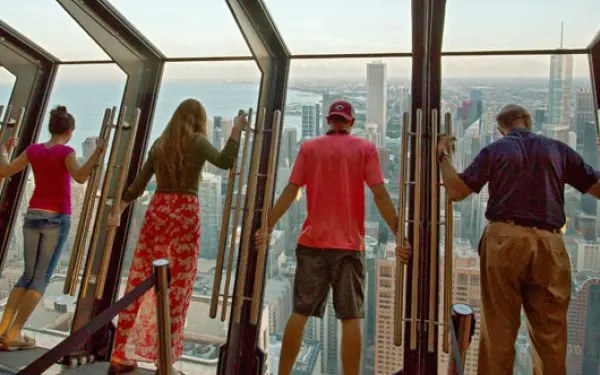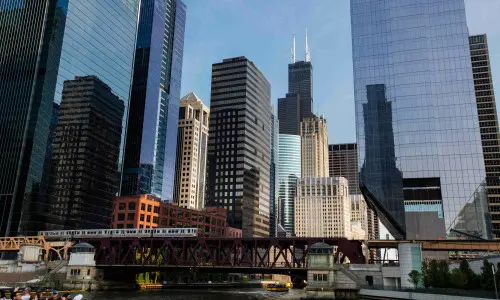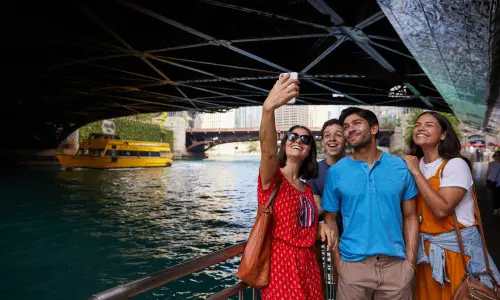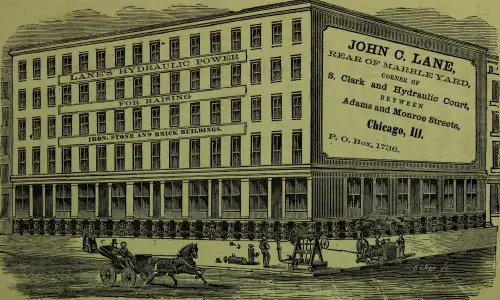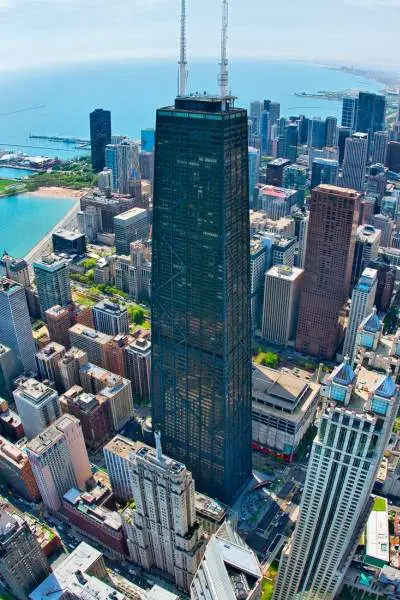
En prácticamente cualquier esquina de Chicago, la inspiración de arquitectos de renombre mundial se plasma en ladrillo, cemento, cristal y acero.
El horizonte de la ciudad refleja más de un siglo de exploración arquitectónica provocada, en parte, por el Gran Incendio de 1871, que diezmó cientos de viejos edificios de madera y ladrillo que ocupaban la orilla del lago. En su lugar surgió una nueva generación de estructuras con esqueletos de acero perfeccionadas por la Escuela de Arquitectos Chicago original: visionarios como Louis Sullivan, Daniel Burnham y Dankmar Adler.
Después de la Segunda Guerra Mundial, una segunda Escuela Chicago Chicago llegó aún más alto. La Torre Sears de Bruce Graham y Fazlur Rahman Khan (ahora llamada Torre Willis) se convirtió en 1973 en el edificio más alto del mundo. Su John Hancock Center, así como el Aon Center de Edward Durell Stone y los Lake Shore Drive Apartments de Ludwig Mies van der Rohe, se sumaron a la lista de edificios emblemáticos del centro de la ciudad.
Hoy, la Ciudad del Viento es mundialmente conocida por su colección de altísimos rascacielos. Los visitantes exploran el entorno construido de la ciudad con recorridos a pie, acuáticos, en bicicleta, autobús, tranvía o tren. Las paradas incluyen imponentes y sobrias torres modernistas que se reflejan en la llana extensión del lago Michigan y edificios más antiguos y pequeños cargados de historia. Los nuevos edificios en proyecto o en construcción prometen nuevas y emocionantes exploraciones.

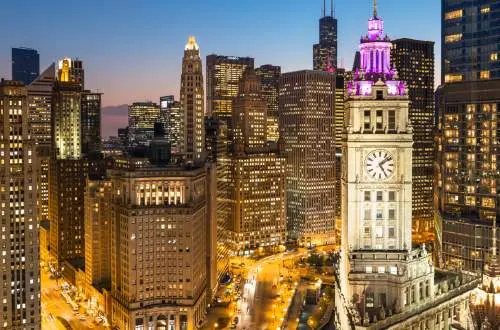
El bucle
En el centro de Chicago, algunos edificios permiten ver kilómetros y kilómetros en todas direcciones, mientras que otros permiten asomarse directamente al pasado. El Centro Cultural Chicago , por ejemplo, se remonta a su inauguración en 1897 como Biblioteca Pública Chicago Chicago, y sorprende a los visitantes con un diseño clásico de columnas, portales arqueados, mármol multicolor y cúpulas de vidrieras sobre alas simétricas. Por el contrario, la Torre Willis, de 110 plantas, se eleva hacia el cielo y los visitantes se deleitan con las vistas desde The Ledge at Skydeck Chicago, donde unas vitrinas de cristal transparente sobresalen de la planta 103 del edificio.
El edificio Merchandise Mart, construido en 1930, es tan grande que en su día mereció su propio código postal. Originalmente compuesto por almacenes y salas de exposición para Marshall Field and Company, el edificio (que ahora alberga tiendas y oficinas) muestra su estética Art Déco con ángulos achaflanados y un vestíbulo con suelo de terrazo y un friso de 17 murales.
Con más de 70 edificios que superan los 500 pies de altura, Chicago presume de tener uno de los skylines más impresionantes del planeta.
Parque del Roble
Con el auge del centro de la ciudad, el arquitecto Frank Lloyd Wright encontró la forma de hacer que la horizontalidad tomara vuelo en sus casas de la Escuela de la Pradera, acentuadas con detalles geométricos y muebles a medida. Oak Park exhibe algunos de los mejores ejemplos de este estilo, como la propia Oak Park Home and Studio del maestro, protagonizada por una sala de juegos infantil de dos plantas con techos abovedados y una claraboya. Realice una visita guiada de una hora o, si dispone de unas horas, combínela con una visita autoguiada con audio por los exteriores de siete casas de la ciudad diseñadas por Wright. El Wright Plus Housewalk anual (el 20 de mayo de este año) incluye visitas interiores poco frecuentes de casas y edificios diseñados por Wright y sus contemporáneos.
Pilsen
Aparte del centro de la ciudad, destruido por un incendio en 1871, quizá ningúnvecindario Chicago haya cambiado tanto como Pilsen, en la zona suroeste. Antaño hogar de inmigrantes bohemios, checos y alemanes, el vecindario se ha convertido en una unida comunidad mexicano-americana. Muchos edificios de estilo europeo antiguo están adornados con murales modernos. Hay que visitar el Thalia Hall, de estilo románico de 1892, restaurado para recuperar su imponente gloria con una entrada de piedra caliza Bedford tallada bajo una vidriera. En el Museo Nacional de Arte Mexicano se pueden contemplar piezas de vivos colores que reflejan el carácter animado del vecindario.
Parque Wicker
Justo al noroeste del Loop, Beer Baron Row cuenta con lujosas mansiones construidas por ricos hombres de negocios a principios del siglo XX. Esos hombres probablemente se reunían en los baños de terracota decorados con peces de North Avenue, ahora ocupados por Trenchermen, un gastropub de moda. La iglesia de San Estanislao Kostka, en un elaborado edificio de estilo renacentista, sigue desempeñando su función original. Frescos de Thaddeus Zukotynski cubren la cúpula sobre el altar. En un tono más desenfadado, la Casa Hermann Weinhardt cautiva a los transeúntes con su ornamentación de pan de jengibre y su paleta de colores navideños de piedra caliza verde y ladrillo rojo.
Campus de la Universidad de Chicago
La arquitectura gótica encuentra formas nuevas y antiguas en este arbolado colegio Chicago la zona sur de Chicago, con la Puerta Hull cubierta de hiedra y la Capilla Joseph Bond, muy propias de las catedrales europeas. Te sentirás como si hubieras entrado en el Gran Salón de Hogwarts mientras paseas por la William Rainey Harper Memorial Library, con su altísimo techo arqueado y su imponente lámpara de araña. La sala Ida Noyes, más íntima, seduce a los visitantes con sus intrincados revestimientos de roble tallado y sus barandillas de hierro forjado. Por su parte, el edificio del Laboratorio Henry Hinds de Ciencias Geofísicas da un giro moderno al gótico con abundantes ángulos rectos.

Interactuar con la arquitectura
Numerosas empresas ofrecen paseos en kayak por el río Chicago , como Wateriders, Urban Kayaks y Kayak Chicago.
La Fundación de Arquitectura de Chicago organiza diversas visitas guiadas por toda la ciudad. El popular crucero fluvial a bordo del Chicago's First Lady parte del paseo fluvial del centro de Chicago. Los guías ofrecen información sobre más de 50 edificios a la vez que comparten datos curiosos sobre la historia de la ciudad en recorridos de 90 minutos en barco. Hay docenas de recorridos a pie temáticos, como Tiff any Treasures y Evolution of the Skyscraper. Para obtener una visión global de la ciudad en un plazo de tiempo ajustado, opte por el recorrido Must-See Chicago , que consiste en subir y bajar del famoso tren L para ver lugares emblemáticos, como el edificio Wrigley, el Instituto de Arte de Chicago y el Teatro Chicago Chicago, todo ello en un plazo de 90 minutos.
Open House Chicago
Vuelva en otoño para disfrutar del popular evento Open House Chicago de la Chicago Architecture Foundation (14 y 15 de octubre este año), que permite el acceso gratuito a un menú cambiante de más de 200 joyas arquitectónicas. Los visitantes tendrán acceso exclusivo a rascacielos, oficinas, clubes privados, monumentos históricos y algunos de los locales más fascinantes de Chicago.
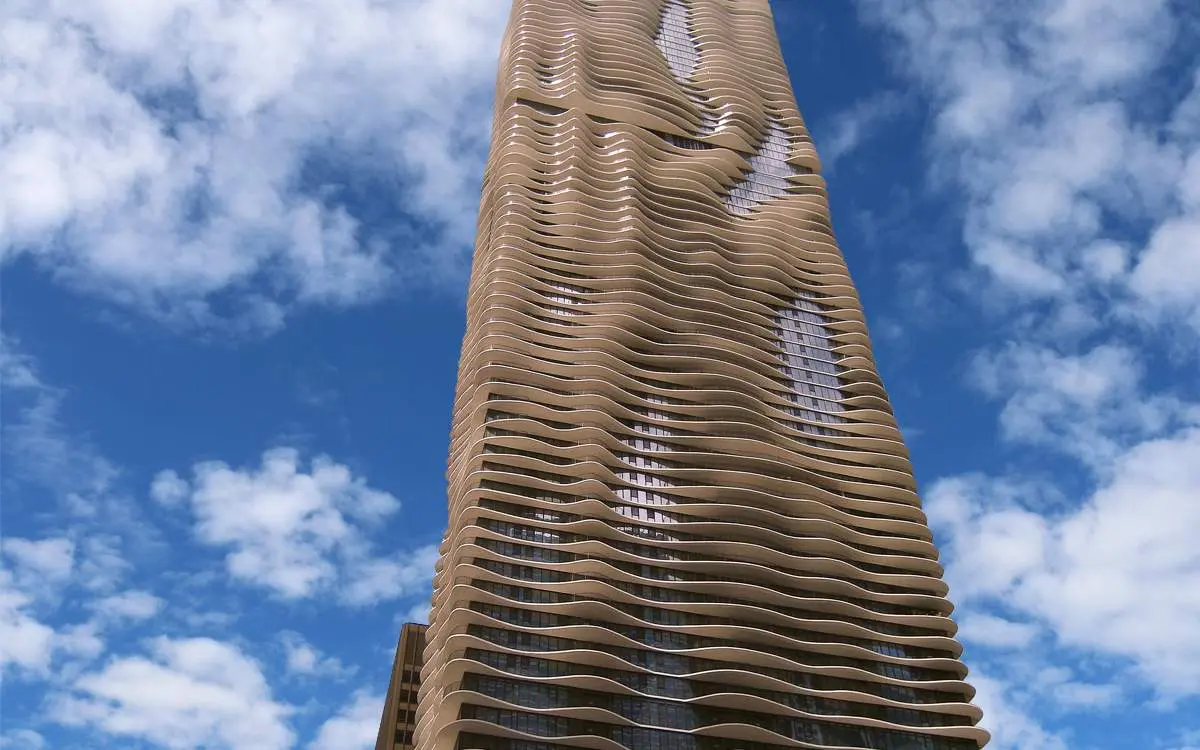
Nuevas estrellas del Skyline
Chicago está lejos de dejar de marcar tendencias arquitectónicas. Un ejemplo: la elegante Vista Tower, de 93 pisos, cuya finalización está prevista para 2020. Otras estructuras nuevas han acaparado la atención en los últimos años:
- Una torre de uso mixto llamada Aqua ha atraído miradas y selfies desde 2009 por su ondulante configuración de 82 plantas.
- El Waldorf Astoria Chicagode 60 plantas Chicagoun exterior de estilo parisino con agujas y columnatas, abrió sus puertas en 2010.
- OneEleven, una torre de vidrio geométricamente segmentada que alberga apartamentos de lujo, se inauguró en 2014.
- El Navy Pier, frente al lago, estrenó en 2016 una nueva noria centenaria. Unas 400 personas pueden montarse a la vez en esta noria de 60 metros de altura. Las góndolas tienen pantallas de vídeo interactivas con información sobre el Navy Pier.
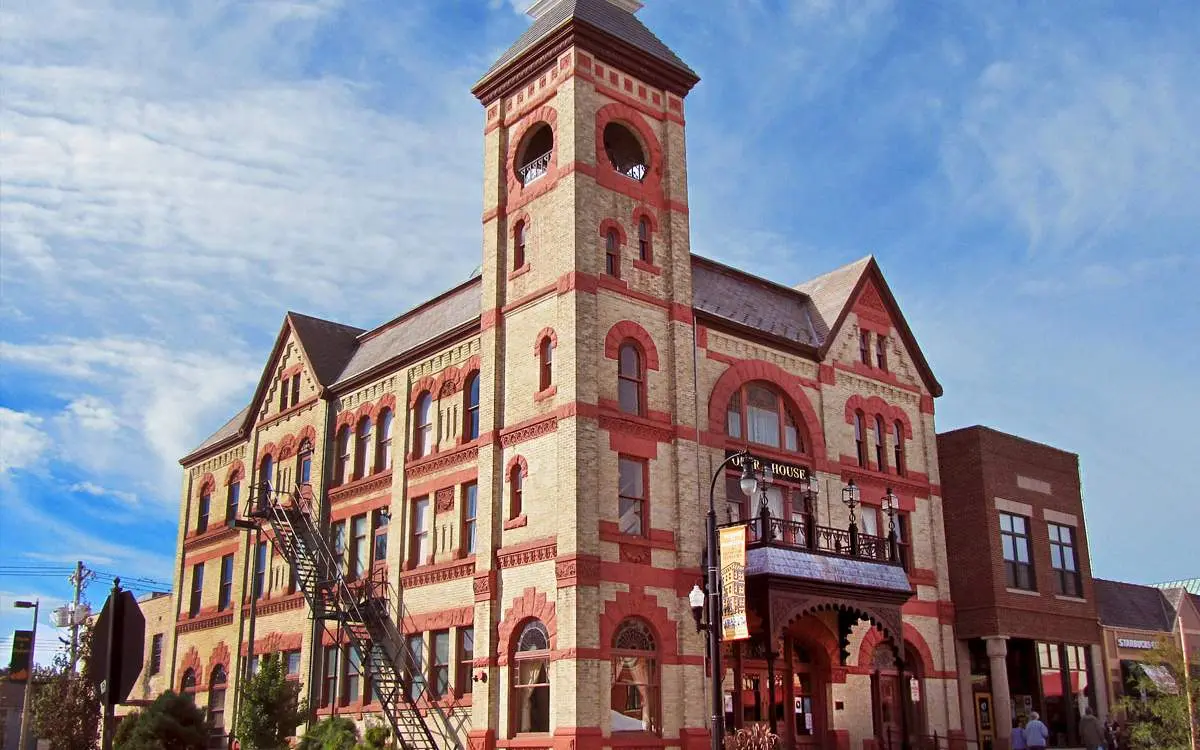
Joyas históricas del Estado
Woodstock
A una hora en coche al noroeste de Chicago, la plaza del pueblo de Woodstock está presidida por la ornamentada Ópera de Woodstock, construida en 1889 con materiales locales, como ladrillo, piedra de campo, terracota y piedra caliza, artísticamente combinados en una estructura que muestra varios estilos: Gótico, victoriano y del Medio Oeste. Los escaparates del siglo XIX (incluidos el juzgado y la residencia del sheriff de 1857) rodean un parque en el centro con un cenador que reproduce el que originalmente protegía un manantial al que se atribuían propiedades medicinales.
Quincy
Con la friolera de 3.600 edificios inscritos en el Registro Nacional de Lugares Históricos, esta ciudad del río Mississippi, en el centro del estado, cuenta con un sinfín de ejemplos de estructuras de estilo federal y renacimiento griego que datan del siglo XIX. Fíjese en la iglesia católica de San Francisco, de estilo gótico, la mansión Newcomb-Stillwell (convertida en Museo de Quincy), la cervecería Dick Brothers (ahora galería de bellas artes) y el castillo de Villa Kathrine, que funciona como centro de visitantes de Quincy en un acantilado sobre el río Misisipi.
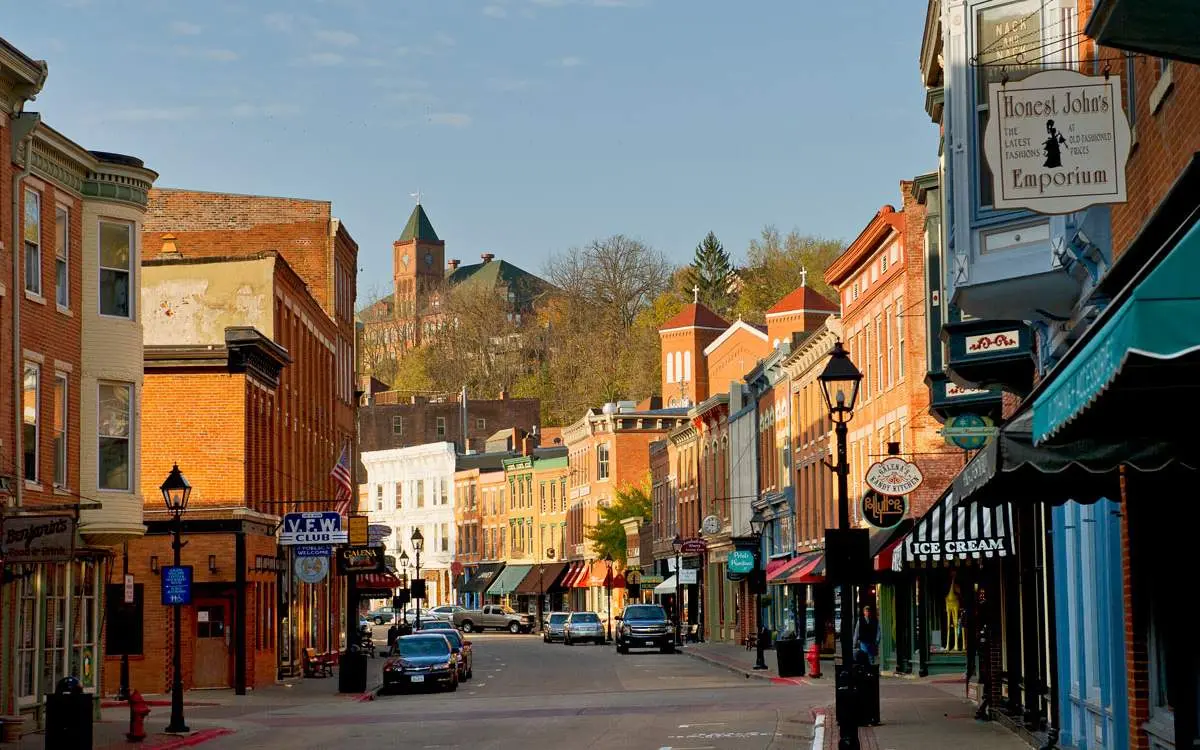
Galena
Las casas antiguas encabezan las vistas de Galena, enclavada en el extremo noroeste del estado. Un impresionante 85% de los edificios de la ciudad están inscritos en el Registro Nacional de Lugares Históricos, entre los que destacan las casas de Ulysses S. Grant y Elihu B. Washburne. Siguiendo aproximadamente el curso del río Galena, Main Street contiene elaboradas estructuras victorianas que albergan cafeterías, salones de té, boutiques, galerías, pensiones (hay 31 en la ciudad) y restaurantes. En los acantilados que rodean el río, amplios jardines sombreados rodean las mansiones construidas por los capitanes de los barcos de vapor y los propietarios de las minas de plomo cercanas, muchas de ellas adornadas con torretas, columnas, ventanales ornamentados y todos los demás adornos y volantes que tanto gustaban a los propietarios del siglo XIX.


